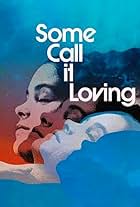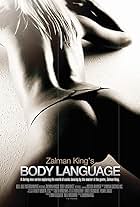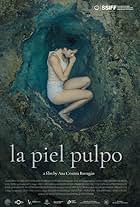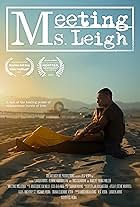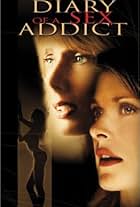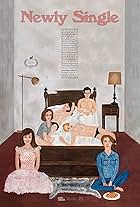Vivian, a stylist, meets wealthy Henry who pursues her relentlessly. After an accident, he tasks her to grant women fantasy experiences on his yacht, recording details for him during his rec... Read allVivian, a stylist, meets wealthy Henry who pursues her relentlessly. After an accident, he tasks her to grant women fantasy experiences on his yacht, recording details for him during his recovery.Vivian, a stylist, meets wealthy Henry who pursues her relentlessly. After an accident, he tasks her to grant women fantasy experiences on his yacht, recording details for him during his recovery.
Domiziano Arcangeli
- Popo
- (as Domi Arcangeli)
Melissa Brown
- Multiple
- (voice)
- Directors
- Writers
- All cast & crew
- Production, box office & more at IMDbPro
Storyline
Did you know
- TriviaKarla Jensen's debut.
- ConnectionsEdited from ChromiumBlue.com (2002)
Featured review
Zalman King is perhaps beginning to replace Ken Russell as the bete noir of those who readily get upset by highly charged but sometimes offensive directing. Much of King's work has been for TV (Red Shoes Diary etc), but films such as "Wild Orchid - Two shades of Blue", or even "9 1/2 weeks" have perhaps given him greater opportunity to exploit strongly erotic themes. His latest work, Chromiumblue.com, of which he is co-author and director, certainly extends this practice. (We first note that at the top of the cast list are two large groups listed as "Models" and "Hookers" respectively). The film's storyline relates to a very rich entrepreneur who experiences a serious accident, and whilst recuperating has to live life vicariously. He makes his private yacht, Chromiumblue, available for selected friends to live out their cherished fantasies on the basis that he is provided with a detailed blow by blow account of how these work out. Clearly this could be an endless theme for a series of films, and a number of short films featuring specific fantasies have already been released. I am however far from clear about the distribution intended for both the main film and these associated short features, which comprise discrete but linked episodes that appear to have been prepared for a TV series.
This film has its own web site, under the same title as the film, where its basis theme is described in greater detail; and opportunity is supposed to be provided for those living in the USA to actually download most of the various supporting features as digital files. (Unfortunately I could not check this out as I live in Canada and could not access the download site). If this is intended partly to advertise the main film it will be very interesting to see whether it leads to increased support in the cinema, or whether it is self-sufficient and discourages actual cinema going. Clearly those who funded the production of this film do not want to see us fully satisfied by watching short TV features, or downloading sequences from the internet. However, there is something of the voyeur in us all, and I assume that the promoters feel this will be sufficiently strong to encourage enough of us decide to go to our local cinema and see the main film.
After viewing the main film I found that some of these fantasy sequences are currently being shown as a weekly early hours feature on one of our local TV channels, but the following comments are based on notes I made before I saw the website or taped any of these individual TV sequences as this seems a fairer way of assessing the main film. The presentation of the film is extremely modern, featuring many of the camera tricks I have only just begun to grow used to in music videos. Numerous very short sequences, often shot from most improbable angles, and frequently superimposed on each other, are strung together to create a mood even when they do not contribute directly to the story. I am now elderly and perhaps overtraditional so this is not my favoured way of creating a movie, but I am also a photographer and I can appreciate much of the excellent photography which went into preparing these sequences. They will probably be very highly appreciated by younger viewers more attuned to this type of cinematography - personally I find it creates too much of a strain on my eyes. The film also makes extensive use of flashbacks. This is usually fine, but unfortunately the excessive use of non-sequential film sequences here was so extreme that I initially found the story very difficult to follow. (Once I had visited the website this difficulty evaporated.) There is also extensive use of captions as an addition to the dialogue. Of greater interest to me was the way in which monochrome segments are integrated with colour shots in a most exciting way - this is a technique which I have always felt has been very underused. (Long ago, when I first saw the 1943 film of Somerset Maughan's novel "The Moon and Sixpence", based on the life of Gauguin, I found that the use of monochrome for all the sequences in Paris and brilliant colour for the sequences in the South Pacific contributed enormously to an understanding of the forces which were driving the painter to flee from his former life. There has been a lot of water under the bridge since then, but this technique has only come back into common use with the development of digital files where the editor can convert a particular sequence to monochrome at the touch of a keyboard.).
Subsequently to writing the above I watched one of the short (about 30m) "Fantasy" sequences on TV. As with the main film it was produced with style and elegance but with very little substance, and with a continuing obsession with firearms which was very hard to understand. This sequence was clearly not inexpensive to produce and there must be some realistic expectation that its costs will be recouped. Possibly the intention is that such fantasy sequences should duplicate the old style "Perils of Pauline" in the cinema in order to encourage patrons to attend regularly each week; but it appears more likely that are expected make their money from TV channel rentals, DVD sales and perhaps download fees from the internet. In Canada I cannot even find out whether these internet downloads are free or subject to a service fee.
My assessment is that this was a stylish and well made, but ultimately empty film. Yes I did enjoy it, and yes I will probably want to watch it again someday (although perhaps not too soon.), but no I do not want to see this style of filmmaking becoming too common, or beginning to replace more traditional practices.
This film has its own web site, under the same title as the film, where its basis theme is described in greater detail; and opportunity is supposed to be provided for those living in the USA to actually download most of the various supporting features as digital files. (Unfortunately I could not check this out as I live in Canada and could not access the download site). If this is intended partly to advertise the main film it will be very interesting to see whether it leads to increased support in the cinema, or whether it is self-sufficient and discourages actual cinema going. Clearly those who funded the production of this film do not want to see us fully satisfied by watching short TV features, or downloading sequences from the internet. However, there is something of the voyeur in us all, and I assume that the promoters feel this will be sufficiently strong to encourage enough of us decide to go to our local cinema and see the main film.
After viewing the main film I found that some of these fantasy sequences are currently being shown as a weekly early hours feature on one of our local TV channels, but the following comments are based on notes I made before I saw the website or taped any of these individual TV sequences as this seems a fairer way of assessing the main film. The presentation of the film is extremely modern, featuring many of the camera tricks I have only just begun to grow used to in music videos. Numerous very short sequences, often shot from most improbable angles, and frequently superimposed on each other, are strung together to create a mood even when they do not contribute directly to the story. I am now elderly and perhaps overtraditional so this is not my favoured way of creating a movie, but I am also a photographer and I can appreciate much of the excellent photography which went into preparing these sequences. They will probably be very highly appreciated by younger viewers more attuned to this type of cinematography - personally I find it creates too much of a strain on my eyes. The film also makes extensive use of flashbacks. This is usually fine, but unfortunately the excessive use of non-sequential film sequences here was so extreme that I initially found the story very difficult to follow. (Once I had visited the website this difficulty evaporated.) There is also extensive use of captions as an addition to the dialogue. Of greater interest to me was the way in which monochrome segments are integrated with colour shots in a most exciting way - this is a technique which I have always felt has been very underused. (Long ago, when I first saw the 1943 film of Somerset Maughan's novel "The Moon and Sixpence", based on the life of Gauguin, I found that the use of monochrome for all the sequences in Paris and brilliant colour for the sequences in the South Pacific contributed enormously to an understanding of the forces which were driving the painter to flee from his former life. There has been a lot of water under the bridge since then, but this technique has only come back into common use with the development of digital files where the editor can convert a particular sequence to monochrome at the touch of a keyboard.).
Subsequently to writing the above I watched one of the short (about 30m) "Fantasy" sequences on TV. As with the main film it was produced with style and elegance but with very little substance, and with a continuing obsession with firearms which was very hard to understand. This sequence was clearly not inexpensive to produce and there must be some realistic expectation that its costs will be recouped. Possibly the intention is that such fantasy sequences should duplicate the old style "Perils of Pauline" in the cinema in order to encourage patrons to attend regularly each week; but it appears more likely that are expected make their money from TV channel rentals, DVD sales and perhaps download fees from the internet. In Canada I cannot even find out whether these internet downloads are free or subject to a service fee.
My assessment is that this was a stylish and well made, but ultimately empty film. Yes I did enjoy it, and yes I will probably want to watch it again someday (although perhaps not too soon.), but no I do not want to see this style of filmmaking becoming too common, or beginning to replace more traditional practices.
Details
- Country of origin
- Language
- Also known as
- Cover Me Girls
- Production company
- See more company credits at IMDbPro
Contribute to this page
Suggest an edit or add missing content
















